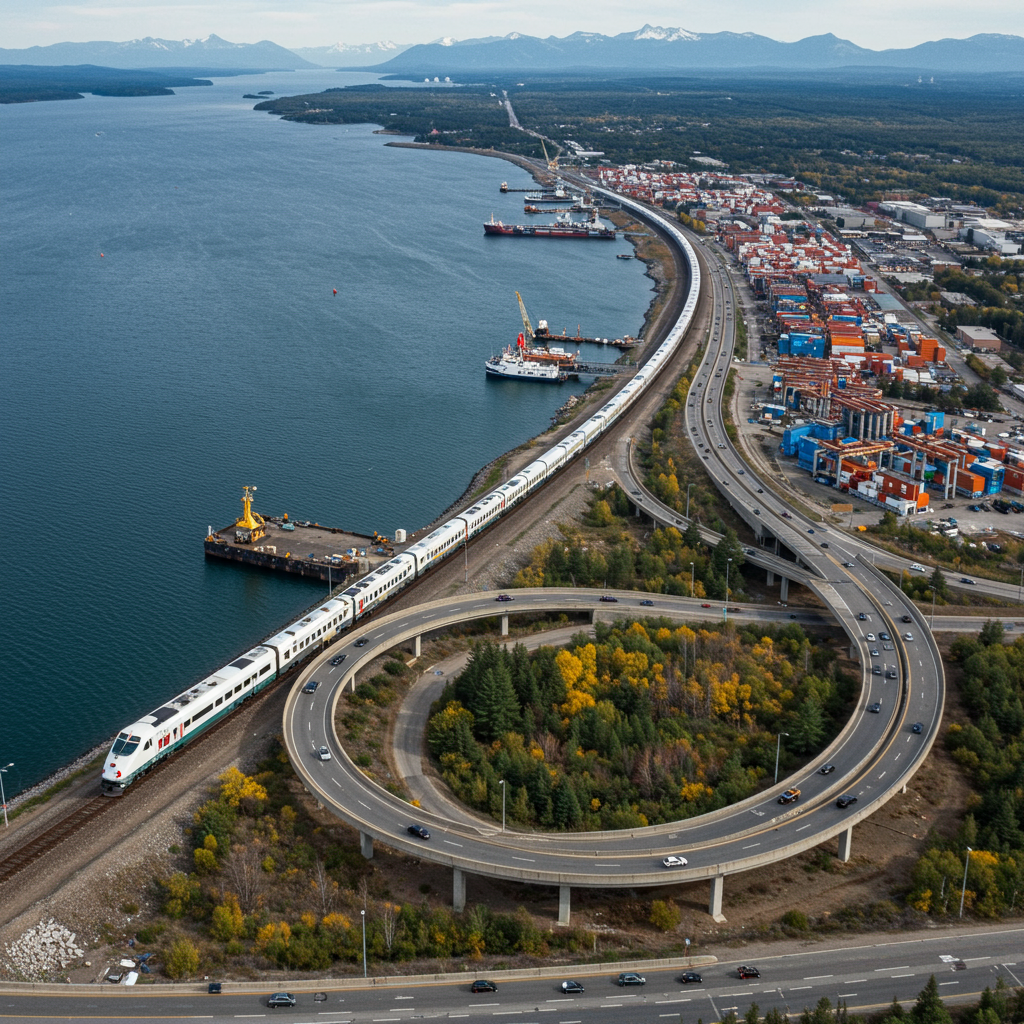Canada stands on the cusp of significant infrastructure development, energized by legislation like Bill C-5, the One Canadian Economy Act. This bill aims to streamline and fast-track major projects deemed critical to the “national interest.” Historically, this phrase has conjured images of steel and concrete: vast railway networks, deepwater ports, and sprawling highways — symbols of a nation constantly pushing forward. While ambition is vital, defining the true “national interest” in the 21st century requires a fundamental shift in perspective. It’s time to recognize that genuine prosperity and long-term resilience are built not just on the land, but intrinsically with the health and vitality of the natural world itself.
The Challenge of Traditional “National Interest”
For generations, Canada’s progress has been measured by large-scale engineering feats. From the Trans-Canada Highway to the St. Lawrence Seaway, these projects shaped the country. However, a singular focus on built infrastructure often overlooks the critical ecological foundations upon which society and the economy depend. Pursuing large projects without fully accounting for their environmental impact risks undermining the very future they seek to create.
Under the framework of Bill C-5, projects designated in the “national interest” can receive expedited approval. Critics argue this process, particularly specific “deeming” provisions within the legislation and the consolidation of power in a single minister, could bypass crucial environmental laws and disregard the rights and input of Indigenous communities. Decisions could potentially be fast-tracked before undergoing comprehensive review, effectively “deeming” compliance or lack of harm despite real-world consequences. This structure highlights the urgent need for robust, integrated environmental considerations from the project’s inception, not as an afterthought.
Projects currently under consideration illustrate these potential conflicts. The Grays Bay Road and Port project in Nunavut, intended to open Arctic shipping lanes and mineral access, traverses delicate permafrost and essential caribou habitat already struggling with climate change. In Ontario, the Ring of Fire mining area, rich in minerals needed for electric vehicles, is situated above the vast Hudson Bay Lowlands, one of the planet’s largest carbon sinks. Even promising clean energy initiatives, like Nova Scotia’s Wind West plan, require new transmission corridors that could fragment forests and impact vital wetlands and marine environments. The long-standing Churchill Falls hydro development, considered a national interest project, faces criticism for its environmental and cultural footprint, including plans for further development. For these projects to truly serve future generations, they must not cause irreparable damage to the environmental systems supporting that future.
A Paired Investment Strategy for Resilience
Fortunately, Canada doesn’t face a simple choice between economic progress and environmental protection. A powerful solution lies in adopting a “paired investment strategy.” This approach mandates that for every dollar spent on traditional, built infrastructure projects – such as roads, ports, and energy transmission lines – a corresponding, scaled portion must be allocated to natural infrastructure.
Investing in natural infrastructure means actively restoring and protecting ecological systems. This includes revitalizing wetlands, conserving forests, expanding urban greenspaces, and developing nature trails that connect communities to the environment. While existing initiatives like the federal Disaster Mitigation and Adaptation Fund and the Natural Infrastructure Fund are positive steps, advocates argue that under accelerated development frameworks like Bill C-5, funding for nature must become mandatory, scaled directly to the ambition of major projects, and integrated into planning from day one.
Double Benefits: Protecting Nature, Protecting People
The advantages of this paired investment approach are significant and interconnected.
First, investing in nature directly enhances the resilience of built infrastructure. Natural systems act as vital buffers against environmental hazards amplified by climate change. Wetlands effectively absorb excess floodwaters, protecting nearby communities and infrastructure from damage. Forests help stabilize soil, preventing erosion and landslides that can threaten roads and buildings. Healthy coastal ecosystems like mangroves and salt marshes absorb storm surge energy, safeguarding coastal developments. Research consistently demonstrates that infrastructure designed with climate resilience and environmental foresight is not only more robust but also more cost-effective over its lifespan. A 2019 observation by the UN Secretary-General highlighted a potential 6-to-1 benefit-cost ratio for climate-resilient infrastructure – for every dollar invested, six could be saved in avoided damages. This finding has been reinforced by subsequent analyses from insurance bureaus and economic think tanks.
Second, access to healthy, intact natural areas is crucial for public health, individual mental well-being, and fostering strong community cohesion. Connecting with nature – whether through walks in a local park, exploring a forest, or simply noticing urban greenery – has been shown to reduce stress, alleviate symptoms of depression and anxiety, improve concentration, and boost overall happiness and life satisfaction. Research indicates that a deeper “connectedness” to nature, involving engaging the senses and fostering appreciation, yields even greater psychological benefits. While nature exists everywhere, access to high-quality natural spaces, particularly in urban and underserved areas, is often unequal. Investing in natural infrastructure can help bridge these gaps, ensuring more Canadians can benefit from the restorative power of the environment.
Building Beyond Funding
While dedicated funding for nature is a powerful starting point, a comprehensive paired investment strategy must be part of a broader, more robust framework. This includes implementing rigorous, independent environmental assessments before projects are approved. It demands meaningful, early consultation with all stakeholders. Crucially, it requires building true partnerships with Indigenous communities, respecting their rights and traditional knowledge regarding the lands and waters involved. Effective tools for comprehensive review already exist; the challenge is ensuring they are utilized within expedited processes like those outlined in Bill C-5.
Canada’s pursuit of ambitious infrastructure goals is understandable and necessary for future prosperity. However, the definition of “national interest” must evolve to fully embrace the ecological health of the nation. How Canada chooses to build – and how it prioritizes investment in the environment alongside traditional construction – will ultimately define its legacy. Ignoring the fundamental truth that the nation’s interest lies not just in what is built on the land, but in the vitality and resilience of the land itself, risks trading long-term well-being for short-term gains.
Frequently Asked Questions
What is the “paired investment strategy” discussed for Canadian infrastructure?
The paired investment strategy proposes allocating a mandatory, scaled portion of funding for major traditional infrastructure projects (like roads, ports, and transmission lines) towards natural infrastructure. This means simultaneously investing in restoring wetlands, protecting forests, creating greenspaces, and building nature access points alongside built projects. The goal is to integrate environmental investment from the outset, ensuring nature protection is not overlooked in large-scale development efforts.
How does Bill C-5 relate to environmental concerns and infrastructure projects in Canada?
Bill C-5, the One Canadian Economy Act, grants the federal cabinet powers to fast-track projects deemed in the “national interest.” Critics argue that under this framework, such projects could potentially bypass standard environmental review processes and disregard existing laws through mechanisms like “deeming” provisions. This raises concerns among environmental groups and legal experts about adequate protection for ecosystems and the need for strengthened environmental considerations within the Bill C-5 process.
What are the specific benefits of investing in natural infrastructure alongside traditional projects?
Investing in natural infrastructure offers multiple benefits. Ecologically, natural systems like wetlands and forests protect built infrastructure by absorbing floodwaters, preventing erosion, and buffering against storms, enhancing resilience and potentially saving costs. Socially, access to healthy natural spaces significantly improves public health, mental well-being, and strengthens community cohesion, contributing to a higher quality of life for Canadians.




